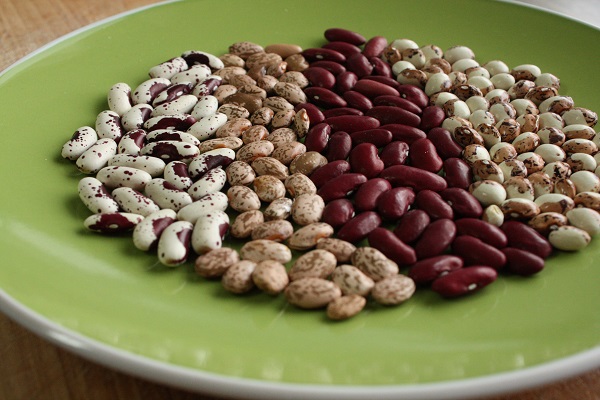I was cooking some dry beans (black and pinto) when I realized there may be some things you didn’t know about doing so. As such, the following is just some quick info about how to cook dry beans that I’ve found over the years:
How to Cook Dry Beans
- Dry beans expand when soaked to about 2-2.5 times their size. Be sure to cover them with PLENTY of water (especially if soaking overnight) so that they expand evenly and that no beans are “left high and dry.”
- Sort beans prior to cooking to remove “bad” beans and small stones. I have failed to do this in the past and wound up trying to eat stones… they’re not very tasty. 🙁
- Remove “floater” beans–the beans that float in water when soaked–as they tend not to cook so well. That might not be entirely factual but it’s my suspicion and, besides, there MUST be something wrong with them if they’re not conforming to majority rule… maybe they’re “prepper” beans. 😉
- Most beans fully hydrate within 4-8 hours but can easily soak overnight for best results. You *could* even soak most beans for a few hours and then cook them longer if you’re short on time but I find it’s best to soak for at least a handful of hours.
- Soak beans overnight to reduce gas. I recently looked this up but it seems that soaking them activates the germination process which releases enzymes to breakdown complex sugars that are generally the cause of flatulence. Who knew!?
- Add a pinch of baking soda when cooking if you have hard water to make them softer.
- Do NOT cook beans in the water they were soaking in; rinse beans thoroughly until the water runs nice and clear before cooking. This not only helps to remove any leftover dirt or residue stuck to the beans but, more importantly, washes away the stuff that cause the aforementioned gastrointestinal issues.
- Do NOT add salt to the beans until they’re cooked. If you add salt while they’re cooking they won’t absorb the water they’re being cooked in which tends to result in harder beans. There’s actually chemistry-related reasons for this and has to do with an imbalance of sodium (the salt) on the “wrong’ side of the bean. In other words, just don’t salt them until they’re fully cooked.
- Cook beans covered (and on simmer) with about an inch or more of water to get them to cook without drying out or burning the bottom of the pot. I used to cook beans uncovered but they tended to dry out and even burn! Keeping a lid on it “recycles” the water and even makes them cook a bit faster, in my opinion. While You’re at it, consider removing the foam that results while beans are being cooked to improve taste and reduce cleanup if it boils over. I’ve had this happen too many times!
- Season beans ONLY after they’re been fully cooked. I think the reason is similar to NOT adding salt but I’m not entirely sure why you’re supposed to wait to add other seasonings besides salt, to be honest.
That’s my thoughts on what everyone should know about how to cook dry beans. Feel free to add your own in the comments below.

Leave a Reply